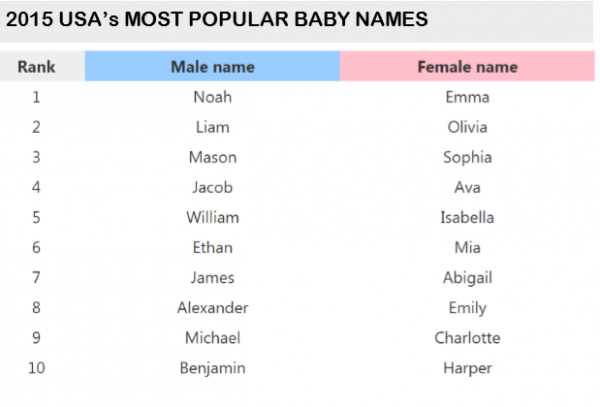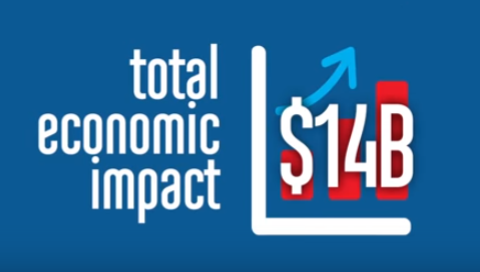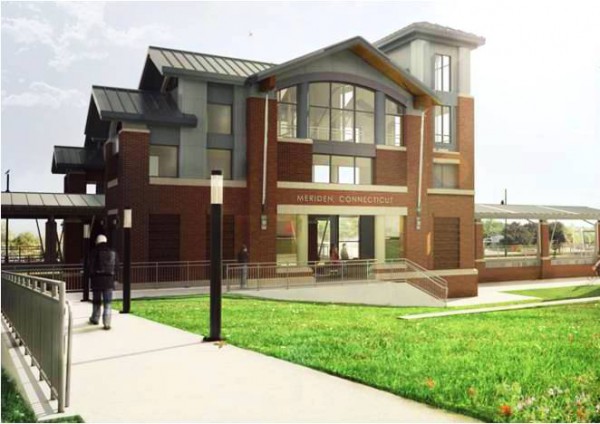Women’s Wellness is Common Thread for 2016 Hall of Fame Inductees
/The remarkable women being honored at this year’s Induction Ceremony & Celebration for the Connecticut Women’s Hall of Fame come from three different generations and varying backgrounds, and have made tremendous contributions to advance awareness of health and wellness issues facing women and whose work inspires others to advocacy and action. Jane Pauley, one of broadcasting’s most respected journalists and longtime advocate for children’s health, education and mental health; Rebecca Lobo, award-winning athlete, Olympic Gold Medalist and successful television analyst, author and motivational speaker; and Dr. Joyce Yerwood, first African American woman physician in Fairfield County, founder of the Yerwood Center and pioneer in drug treatment programs; will be inducted into the Hall of Fame on November 2.
The theme for this year’s event will be “Women's Wellness: Awareness, Advocacy & Action.”
“Wellness is critical to women’s opportunities to achieve and succeed across all fields, and we don’t have to look far to see the health and wellness challenges women face daily,” says Katherine Wiltshire, executive director of the Connecticut Women’s Hall of Fame.
“From athletics and advocacy to providing direct healthcare services, our 2016 Inductees have worked in diverse fields to promote women’s wellness,” continues Wiltshire. “We are thrilled to honor these incredible women and share their stories in an effort to inspire even more women and girls to take informed action when it comes to their own wellbeing.”
The Centers for Disease Control (CDC) reports, for example, that more than 60 percent of U.S. women do not get adequate exercise; data from the National Institute of Mental Health suggests that more than 20 percent of U.S. women struggle with mental illness; Kaiser Family Foundation research shows that one fifth of women cannot afford to see a doctor.

To be considered for induction to the Connecticut Women’s Hall of fame, a nominee must:
- be a Connecticut native and/or Connecticut resident
- be the first woman, historic or living, to achieve recognition in her field of endeavor; or have a lifetime of achievement in that field
- have made a significant statewide contribution to arts, athletics, business, government, philanthropy, humanities, science, education, etc.
Pauley was the co-host of TODAY on NBC from 1976 to 1989, anchored Dateline NBC for more than a decade and in 2004 became the host of her own daytime program, The Jane Pauley Show. Pauley is the recipient of numerous Emmy and other awards, including the prestigious Walter Cronkite Award for Excellence in Journalism and the Gracie Allen Award from the Foundation of American Women in Radio & Television. Since 2014, Pauley has been contributing to CBS Sunday Morning and has guest-hosted CBS This Morning and the CBS Evening News.
Both on and off the court, Rebecca Lobo personifies success. As the 1995 consensus National Player of the Year, she led the University of Connecticut Women’s Basketball team to its first National Championship. In 1996, she won a gold medal as the youngest member of the U.S. Women’s Olympic Basketball Team, before embarking on a successful seven-year WNBA career. In 2001, Ms. Lobo and her mother, RuthAnn, founded “The RuthAnn and Rebecca Lobo Scholarship in Allied Health” at the University of Connecticut to encourage diversity in the health professions. Rebecca was inducted into the Women’s Basketball Hall of Fame in 2010, and today works as a television analyst, author, and motivational speaker.
 “Her most visible contribution to the city,” the Stamford Advocate reported at Dr. Joyce Yerwood’s death at age 78 in 1987, “was her role in founding the community center that would bear her name.” According to published reports, the story of the Yerwood Center started with a child's statement. While talking to a group of children shortly before starting her practice, one of them said to her, "You're a colored doctor. I never knew that a colored woman could be a doctor."
“Her most visible contribution to the city,” the Stamford Advocate reported at Dr. Joyce Yerwood’s death at age 78 in 1987, “was her role in founding the community center that would bear her name.” According to published reports, the story of the Yerwood Center started with a child's statement. While talking to a group of children shortly before starting her practice, one of them said to her, "You're a colored doctor. I never knew that a colored woman could be a doctor."
Born in Texas, Yerwood graduated from Meharry Medical College in Tennesse and then moved to Stamford with her husband, Dr. Joseph L. Carwin, a community leader for whom Carwin Park is named, the Stamford Advocate reported. Today, the Yerwood Center hosts the Boys & Girls Club, which had a grand opening just a few months ago.
Last year’s inductees to the Connecticut Women’s Hall of Fame were Carolyn Miles, President and CEO of Save the Children, Indra Nooyi, Chairman and CEO of PepsiCo, and Margaret Bourke-White, the first female photographer for LIFE magazine and first female American war photojournalist.
The mission of the Connecticut Women’s Hall of Fame (CWHF) is to honor publicly the achievements of Connecticut women, preserve their stories, educate the public and inspire the continued achievements of women and girls.
Founded in 1994 in Hartford, CWHF is a provider of innovative educational programs and tools that inspire women and girls to believe in their unlimited potential. With more than 100 inductees, CWHF “leverages these powerful stories and make history relevant through programs for educators, multi-media presentations and traveling exhibits offered free-of-charge.”
The 23rd Annual Induction Ceremony & Celebration will be Wednesday, November 2, 2016, 6:00-9:00 P.M. at the Connecticut Convention Center in Hartford. The CWHF website, www.cwhf.org, is a “Virtual Hall” where visitors can explore all that CWHF has to offer.









 for a proposed mixed use development project at 161-177 State Street, which is phase one of a multi-phase project that includes demolition of the Mills public housing project and implementation of the Harbor Brook Flood Control project north of the Hub site. The new building will be within walking distance of Meriden`s new Transit center.
for a proposed mixed use development project at 161-177 State Street, which is phase one of a multi-phase project that includes demolition of the Mills public housing project and implementation of the Harbor Brook Flood Control project north of the Hub site. The new building will be within walking distance of Meriden`s new Transit center. In February, the Connecticut Small Business Development Center (CTSBDC), the City of Meriden and The Midstate Chamber of Commerce announced the opening of the newest CTSBDC office, to be located at Meriden City Hall.
In February, the Connecticut Small Business Development Center (CTSBDC), the City of Meriden and The Midstate Chamber of Commerce announced the opening of the newest CTSBDC office, to be located at Meriden City Hall.


 In an article appearing in this week’s
In an article appearing in this week’s  Chinese made up 35 percent of the 92,000 foreign secondary school students in the United States in 2015, according to the US Department of Homeland Security, by far the largest group studying here, the Boston Globe
Chinese made up 35 percent of the 92,000 foreign secondary school students in the United States in 2015, according to the US Department of Homeland Security, by far the largest group studying here, the Boston Globe 

 The states with the largest Latino population are California, Texas, Florida, New York, Illinois, Arizona, New Jersey, Colorado, New Mexico, Georgia and North Carolina. With the smallest Latino populations are two New England states – Maine and Vermont – along with North and South Dakota and West Virginia. Another New England state, New Hampshire, is among the ten states with the smallest Latino population.
The states with the largest Latino population are California, Texas, Florida, New York, Illinois, Arizona, New Jersey, Colorado, New Mexico, Georgia and North Carolina. With the smallest Latino populations are two New England states – Maine and Vermont – along with North and South Dakota and West Virginia. Another New England state, New Hampshire, is among the ten states with the smallest Latino population. The new network would dramatically extend televised and online coverage and “on-demand access” to all legislative hearings and debates, as well as public policy conferences, regulatory hearings, executive agency meetings, and state Supreme Court and Appellate judicial proceedings.
The new network would dramatically extend televised and online coverage and “on-demand access” to all legislative hearings and debates, as well as public policy conferences, regulatory hearings, executive agency meetings, and state Supreme Court and Appellate judicial proceedings. Giguere pointed out that “there are 10 hearing rooms, but CT¬N’s physical plant limits us to covering only two events concurrently. That means up to 80% of the Legislative committee process at any given time goes unseen. Our capacity to cover the Executive and Judicial Branches is even more limited.”
Giguere pointed out that “there are 10 hearing rooms, but CT¬N’s physical plant limits us to covering only two events concurrently. That means up to 80% of the Legislative committee process at any given time goes unseen. Our capacity to cover the Executive and Judicial Branches is even more limited.” currently funded, CFOG notes, “the new entity would be monitored and accountable to the public, but independent from government itself.”
currently funded, CFOG notes, “the new entity would be monitored and accountable to the public, but independent from government itself.” When asked to think about overall business conditions in Connecticut versus 6 months ago, respondents – for the first time in three quarters – said conditions are better now than 6 months ago. The margin was narrow - with 27 percent saying “better” and 25 percent saying “worse”, but that’s a reversal from the past two quarters, when more people were of the view that business conditions has worsened (22%-24% and 24%-28% in the two previous quarters).
When asked to think about overall business conditions in Connecticut versus 6 months ago, respondents – for the first time in three quarters – said conditions are better now than 6 months ago. The margin was narrow - with 27 percent saying “better” and 25 percent saying “worse”, but that’s a reversal from the past two quarters, when more people were of the view that business conditions has worsened (22%-24% and 24%-28% in the two previous quarters).
 In a survey of states nationwide, Illinois was at the bottom of the list, with only one in four Illinois residents indicating confidence in their state government, the lowest among the 50 states by a significant margin. Rhode Island (33%) and Connecticut (39%) join Illinois as states with less than 40 percent government confidence, according to data compiled by Gallup. North Dakota residents are the most trusting; 81 percent say they are confident in their state government.
In a survey of states nationwide, Illinois was at the bottom of the list, with only one in four Illinois residents indicating confidence in their state government, the lowest among the 50 states by a significant margin. Rhode Island (33%) and Connecticut (39%) join Illinois as states with less than 40 percent government confidence, according to data compiled by Gallup. North Dakota residents are the most trusting; 81 percent say they are confident in their state government. ts are based on Gallup's 50-state poll, conducted March through December 2015. Gallup asked respondents whether they do or do not have confidence in their state's "government in general."
ts are based on Gallup's 50-state poll, conducted March through December 2015. Gallup asked respondents whether they do or do not have confidence in their state's "government in general."



























